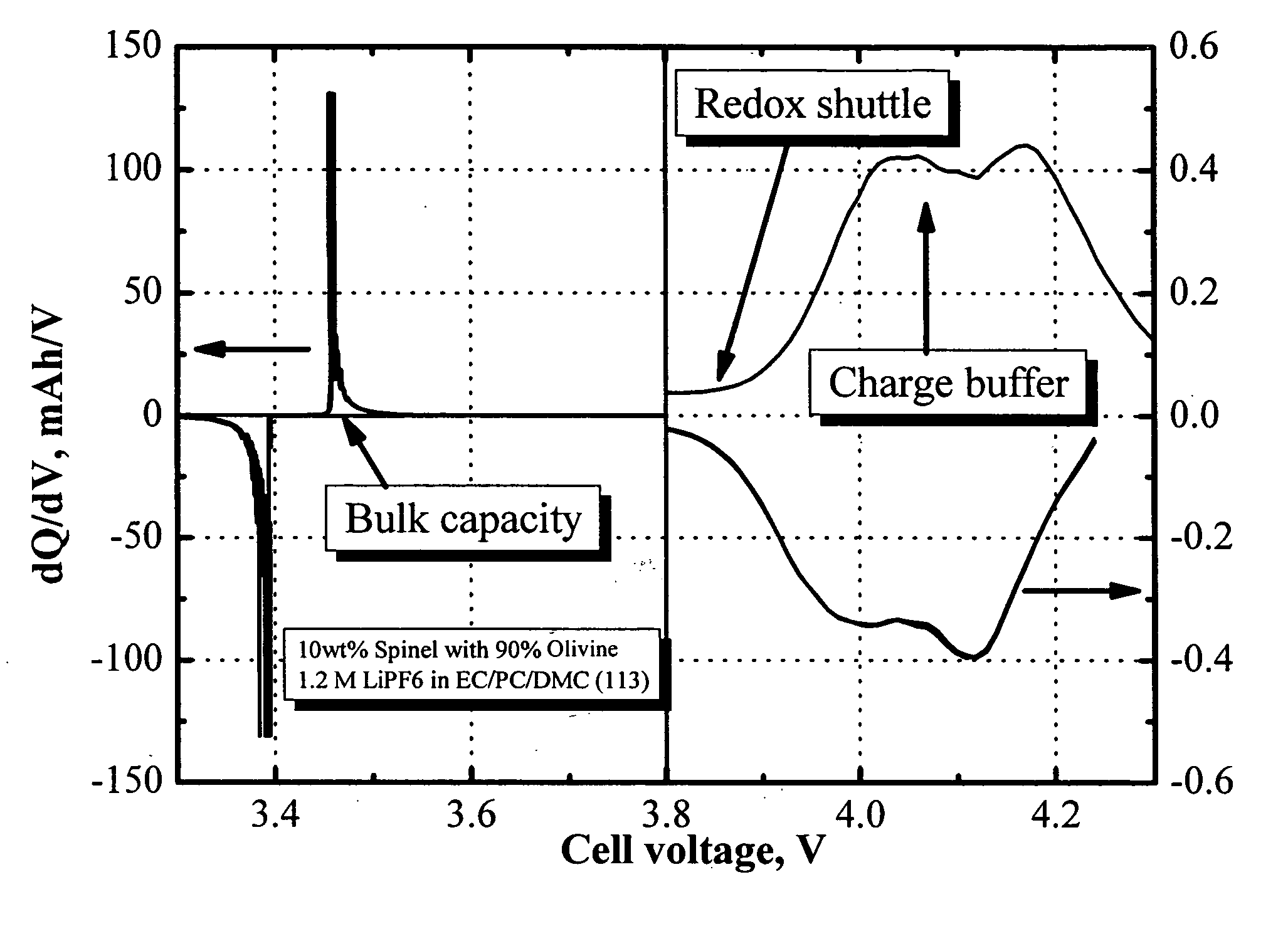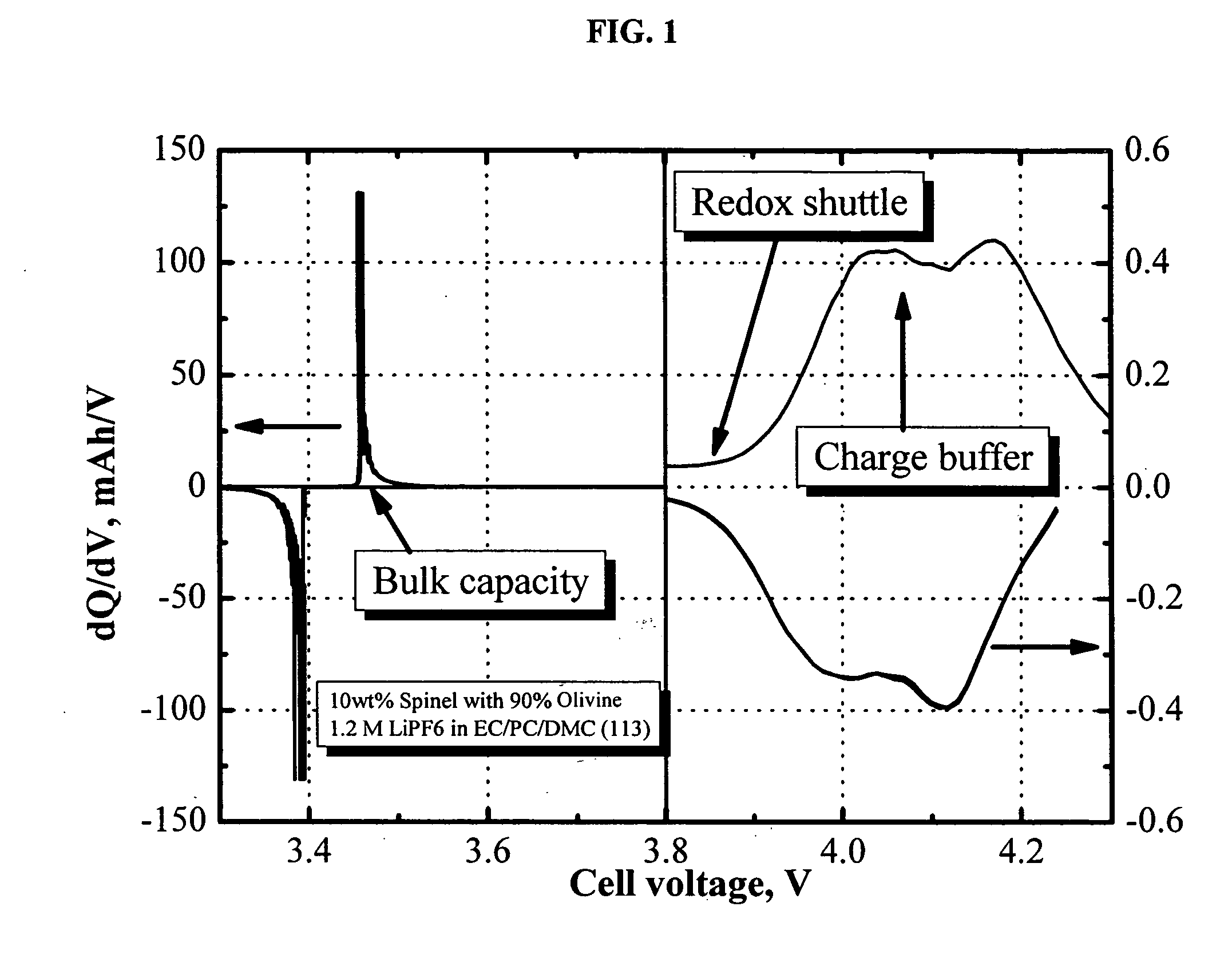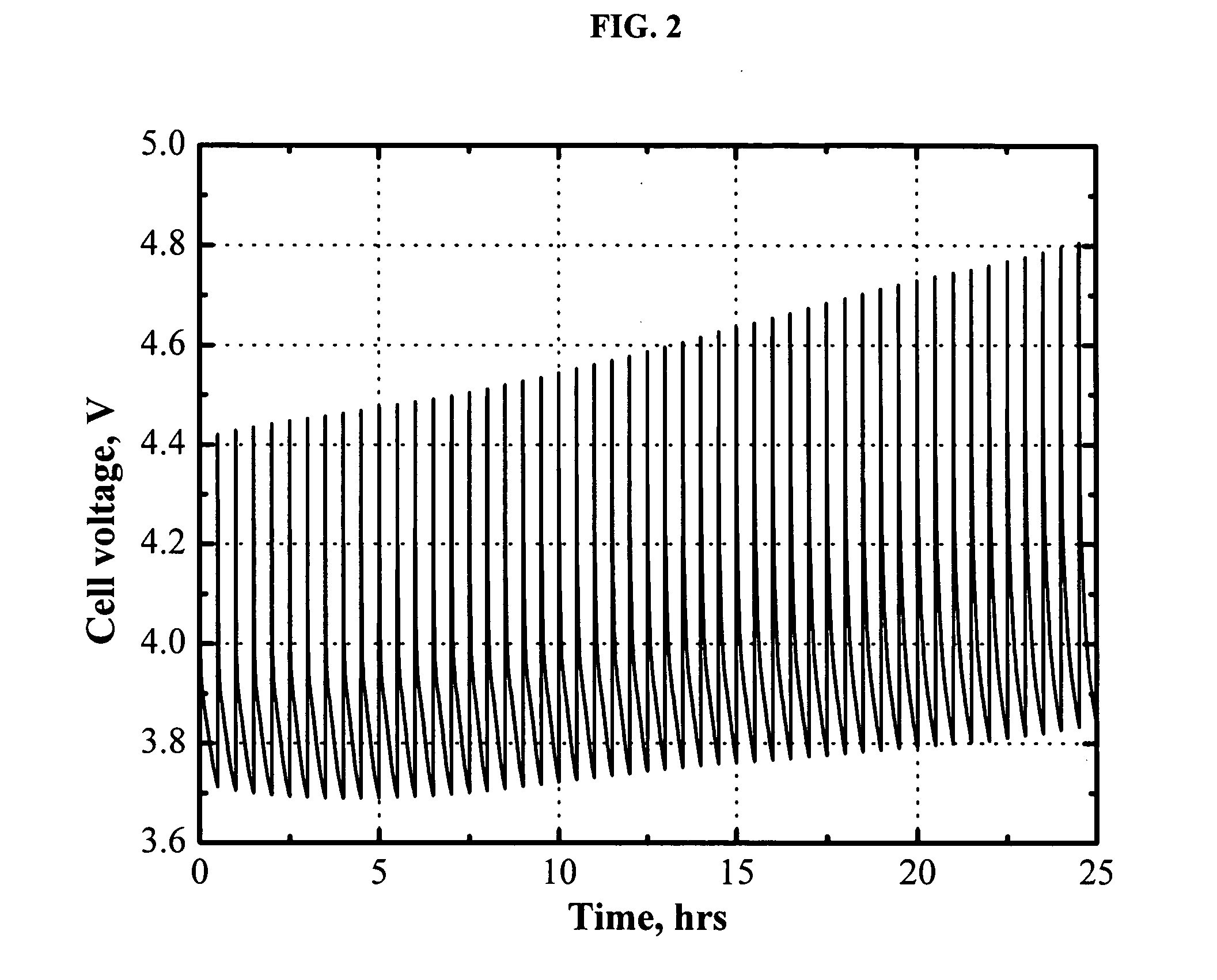Lithium-ion batteries with intrinsic pulse overcharge protection
a technology of lithium-ion batteries and intrinsic pulse overcharge protection, which is applied in the direction of non-aqueous electrolyte cells, cell components, electrochemical generators, etc., can solve the problems of rapid temperature elevation, trigger self-accelerating reactions leading up, electrochemical reactions of battery components, etc., and achieve the effect of boosting the pulse overcharge protection capability of the redox shuttl
- Summary
- Abstract
- Description
- Claims
- Application Information
AI Technical Summary
Benefits of technology
Problems solved by technology
Method used
Image
Examples
example 1
[0045]FIG. 1 shows the differential capacity profile of a half-cell comprising a LiFePO4 / LiMn2O4 blended positive electrode. The electrolyte used is 1.2 M LiPF6 in EC / PC / DMC (1:1:3 by weight). Notice that the figure in the right panel was blown up by a factor of 250. Clearly, the LiFePO4 delivers the bulk capacity at about 3.5 V vs. Li0, and the redox shuttle additive, 2,5-di-(tert-butyl)-1,4-dimethoxybenzene, delivers charge capacity at about 3.9 V. The profile shown in the right panel is differential capacity of LiMn2O4, which acts as the charge buffer in this example.
example 2
[0046]FIG. 2 shows the cell voltage of a MCMB / LiFePO4 cell that is pulse-overcharged. The electrolyte used is 0.7 M LiBOB in EC / PC / DMC (1:1:3 by weight) with 1.5 wt % 2,5-di-(tert-butyl)-1,4-dimethoxybenzene added as a redox shuttle additive. The cell was pulse-overcharged at a 3 C rate for 18 seconds every 30 minutes. FIG. 2 clearly shows that the addition of the redox shuttle additive to the electrolyte does not prevent increasing cell voltage during the pulse-overcharge at a 3 C rate. The cell voltage at the end of the pulse-overcharge rapidly increases with the pulse number.
example 3
[0047]FIG. 3 shows the cell voltage of a MCMB / LiFePO4 and LiMn2O4 cell that is pulse-overcharged. The electrolyte used is 0.7 M LiBOB in EC / PC / DMC (1:1:3 by weight) without any redox shuttle additive. The cell was pulse-overcharged at a 2 C rate for 18 seconds every 30 minutes. The cell did not survive the 2 C pulse-overcharging as shown by the accumulation of charge on the positive electrode during overcharge. The charge accumulation occurs despite the presence of the LiMn2O4 charge buffer.
PUM
| Property | Measurement | Unit |
|---|---|---|
| cell voltage | aaaaa | aaaaa |
| voltage potentials | aaaaa | aaaaa |
| polar | aaaaa | aaaaa |
Abstract
Description
Claims
Application Information
 Login to View More
Login to View More - R&D
- Intellectual Property
- Life Sciences
- Materials
- Tech Scout
- Unparalleled Data Quality
- Higher Quality Content
- 60% Fewer Hallucinations
Browse by: Latest US Patents, China's latest patents, Technical Efficacy Thesaurus, Application Domain, Technology Topic, Popular Technical Reports.
© 2025 PatSnap. All rights reserved.Legal|Privacy policy|Modern Slavery Act Transparency Statement|Sitemap|About US| Contact US: help@patsnap.com



